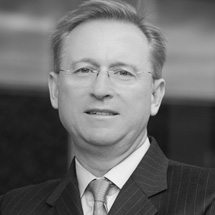

Berkshire Hathaway published its 2015 Annual Report this past weekend, including the much-anticipated “Letter to Shareholders” from Mr. Buffett. This year’s letter was somewhat less newsworthy than last year’s, which was specially expanded to mark the 50th anniversary of Buffett taking charge of Berkshire Hathaway. Here are my preliminary observations:
Financial Performance
1. Financially, according to Buffett’s preferred measures, 2015 was a mediocre year for Berkshire Hathaway. Buffett has long advocated change in intrinsic value per share as the best measure of Berkshire’s performance. Intrinsic value — essentially the present value of future earnings — cannot be objectively measured, and as a proxy, Buffett has long used the change in book value per share as an approximation.
On this measure, Berkshire achieved an increase of 6.4% in book value per share in 2015 — its worst performance since 2011. By way of comparison, 2014 was 8.3%, 2013 was 18.2%, and 2012 was 14.4%.
Change in book value per share is only a rough estimate of change in intrinsic value. Buffett explains that it was pretty accurate back in the day, when the fund primarily invested is marketable securities, which were marked to market on the balance sheet. However, it has become less accurate since the early 1990s, when the investment strategy has moved more towards owning entire companies. True intrinsic value now hugely exceeds book value. For that reason, beginning a year ago, Buffett introduced another measure of value: change in market value per share. On this measure, 2015 was a worse year for Berkshire in that per share market value declined by 12.5%. This came on the back of increases of 27%, 32.7% and 16.8% in the previous three years. Buffett does not really comment on the two measures specifically in regard to 2015, except to say that the measures “vary erratically over short periods”.
Insurance Operations
2. It is Berkshire’s insurance operations that are probably of most interest to readers. It is reported that Berkshire’s “huge and growing insurance operations” made an underwriting profit in 2015, which makes 13 years in a row. I will not get into a discussion here about the quality of that earnings record, except to say that due to the cyclical nature of the insurance market, it is remarkable and exceptional for an insurance company to make an underwriting profit year after year.
Float (“money that doesn’t belong to us but that we invest for Berkshire’s benefit”) increased to $88 billion, an all-time high. As Buffett points out, the combination of consistent underwriting profit and earnings from float means that “Berkshire’s largest unrecorded wealth lies in its insurance business”.
3. By way of a prelude to the discussion of insurance, Buffett now discloses that the company includes insurance underwriting income in the computation of business earnings when considering intrinsic value. Hitherto, they have excluded underwriting income for reasons of conservatism because it was too erratic and tied closely to the underwriting of catastrophic risks. He explains: “Today our insurance results are likely to be more stable than was the case a decade or two ago, because we have deemphasized catastrophe coverages and greatly expanded our bread-and-butter lines of business”. This is driven by underwriting workers’ compensation, commercial auto, etc. Berkshire is still a relatively insignificant underwriter of commercial liability coverage.
4. Turning to discuss the insurance operations, Buffett, as usual, reminds readers of its insurance operations’ central importance to the Berkshire enterprise. “The property-casualty branch of that industry has been the engine that has propelled our expansion since 1967 … ”. He adds: “Today, National Indemnity is the largest property-casualty company in the world, as measured by net worth. Moreover, its intrinsic value is far in excess of the value at which it is carried on our books.”
5. Buffett, as usual, goes on to explain the attractions of the insurance model for generating “float” — the “collect-now, pay-later” model that leaves insurance companies holding large sums of cash that can be invested for their own benefit. Going on to put this in the context of National Indemnity and its run-off contracts (retroactive reinsurance transactions), Buffett states that the nature of these contracts is such that their related float will always drift downwards. However, he adds, “If we do in time experience a decline in float, it will be very gradual – at the outside, no more that 3% in any year. The nature of our insurance contracts is such that we can never be subject to immediate or near-term demands for sums that are of significance to our cash resources. This structure is by design and is a key component in the strength of Berkshire’s economic fortress. It will never be compromised”. Please forgive the rather long quotation from the Oracle of Omaha, but there we have it in the plain language. The float generated by retroactive reinsurance transactions is an intrinsic element of the Berkshire enterprise, and the structures are designed to ensure that float declines only very gradually.
6. Buffett goes on to explain the relationship between float and intrinsic value. When book value is calculated, float is treated just like a liability, as though it had to be repaid tomorrow. But the economic reality is that Berkshire’s float is both “costless and long-enduring”, meaning that the “true value of this liability is dramatically less than the accounting liability”. This is, he says, “… a huge reason – why we believe Berkshire’s intrinsic business value substantially exceeds its book value”.
7. After a discussion of its three major insurance groups — Berkshire Hathaway Reinsurance Group, General Re, and GEICO — Buffett devotes a few words to a group of smaller insurance companies that primarily write commercial coverages. Included within this group is Berkshire Hathaway Specialty Insurance, founded less than three years ago and headed by a group of former AIG executives. Buffett predicts that, over time, this is destined to become one of the world’s leading P/C insurers.
Non-Insurance Operations
8. Speaking to its “Powerhouse Five”, the largest industrial companies owned by Berkshire, Buffett singles out BNSF, its railroad company, for significant capital investments and significant improvements in customer service.
He also points out that next year it will be the “Powerhouse Six”, following their recent $32 billion cash purchase of Precision Castparts Corp. Including PCC, Berkshire now owns at least 10 companies big enough to be in the Fortune 500.
9. Berkshire does not exclusively own companies; it also invests in equity positions as a passive investor in companies like IBM and Wells Fargo and, in 2015, increased its investments in the largest “Big Four”. Buffett analogies the benefits of this dual strategy as being like a bi-sexual; it doubles your chances of finding a date for Saturday night!
Commentary on the General Economy
10. Framing his remark is the context of the election cycle, Buffett exhorts the health of the American economy and the capitalist system in general as delivering enormous per capita gains in the standard of living of the average American: “The babies being born in America today are the luckiest crop in history”.
11. Responding to a shareholder proxy proposal regarding climate change, Buffett states: “It seems highly unlikely to me that climate change poses a major problem for the planet”. This comment has been widely reported and caused no small amount of controversy given Buffett’s close relationship with the current Administration. Putting this in the context of Berkshire’s insurance operations, Buffett explains that Berkshire has backed away from the business of insuring against hurricane risk, because these events are not becoming more frequent or costly, and as a result, premium rates have actually fallen. In conclusion, he states: “As a citizen, you may understandably find climate change keeping you up at night. As a homeowner in a low-lying area, you may wish to consider moving. But when you are thinking only as a shareholder of a major insurer, climate change should not be on your list of worries”.
Retroactive Reinsurance
12. A couple of points of interest from the body of the Berkshire Hathaway Annual Report. Premiums from retroactive reinsurance were practically zero in 2015, as no significant transactions took place — in contrast to 2014 when the Liberty Mutual deal brought in over $3 billion. Also, estimated ultimate liabilities for asbestos and environmental liabilities increased again — by $550 million, following an increase of $825 million in 2014.
Never miss a post. Get Risky Business tips and insights delivered right to your inbox.

Jonathan Terrell is the Founder and President of KCIC. He has more than 30 years of international financial services experience with a multi-disciplinary background in accounting, finance and insurance. Prior to founding KCIC in 2002, he worked at Zurich Financial Services, JP Morgan, and PriceWaterhouseCoopers.
Learn More About Jonathan